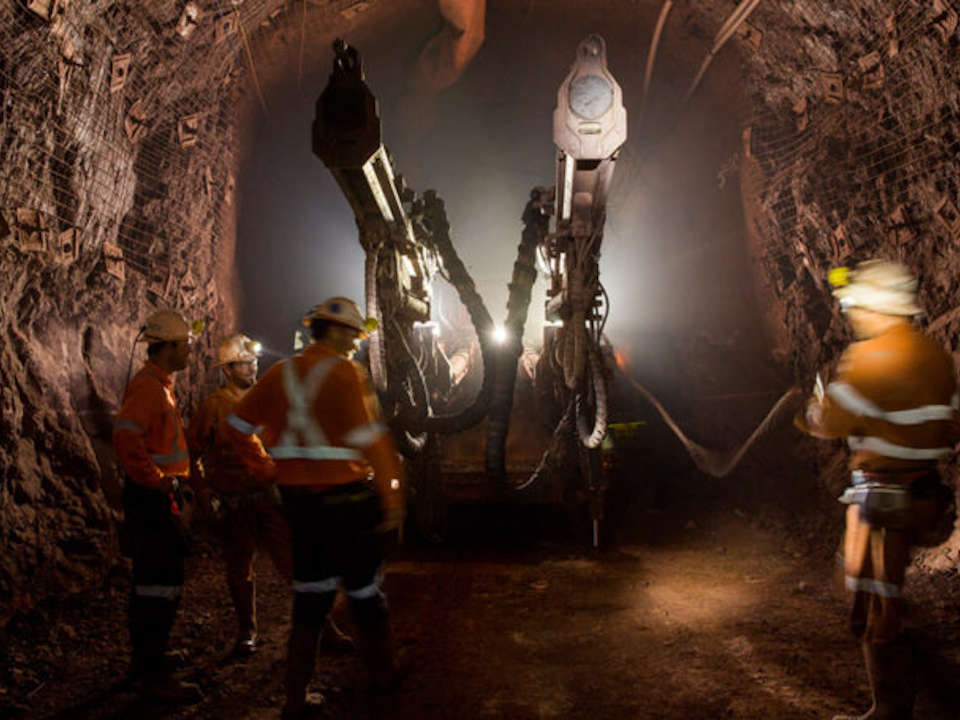News
South Australia’s mining sector is well placed to play a crucial role in helping the state’s economy off the floor at the conclusion of the COVID-19 crisis

According to figures from the South Australian Chamber of Mining and Energy, royalties paid to the state government are projected to reach $325 million for the 19/20 financial year, up from $299 million the previous financial year and $207 million in 2015/16.
Underground at Oz Minerals' Prominent Hill mine in South Australia.
According to figures from the South Australian Chamber of Mining and Energy, royalties paid to the state government are projected to reach $325 million for the 19/20 financial year, up from $299 million the previous financial year and $207 million in 2015/16.
Jobs in the sector have also grown to reach 27,200 direct and non-direct employees this year and have been boosted in recent times by more than 1000 direct construction and production jobs at Oz Minerals’ new Carrapateena copper/gold mine 160km north of Port Augusta.
While global commodity prices, which are calculated in US dollars, have dipped in the past two months, this has been largely offset locally by a slump in the value of the Australian dollar to some of the lowest levels in almost two decades.
A global survey of 2400 explorers, developers and other mining-related companies was released in February and listed South Australia as the 6th most attractive jurisdiction in the world for mining investment, up from 24th in 2018.
The Fraser Institute Survey of Mining Companies 2019 ranking for South Australia was the first time the state had been recognised in the top 10 since 2015, when it was ranked 10th of 109 jurisdictions. In the 2019 survey, Western Australia was ranked No. 1 ahead of Finland and Nevada.
In November PwC released its annual overview of Australia’s 50 biggest mid-tier mining companies, Aussie Mine 2019.
The report into the largest ASX mining companies with a market capitalisation of less than $5 billion at 30 June 2019 found revenues of the publicly listed companies increased by 28 per cent on 2018 and their combined market capitalisation had reached their highest level since 2011.
While market caps have reduced in the past couple of months as stock markets around the world suffer through the coronavirus crisis, the pandemic is yet to significantly slow production at South Australia’s major mines.
In 2019, the state produced about $4.5 billion worth of minerals, led by copper, which accounted for about 50 per cent of the value, followed by gold and iron ore. South Australia is also a major producer of uranium, hosting four of the six approved uranium mines in Australia, which generated more than $500 million in revenue last year.
PwC partner Andrew Forman said the rise in royalties in recent years was a result of increases in both production and sale prices.
“What we’ve seen in the last few years in South Australia is both of those things – increases in production and also steady increase in commodity prices, which have pulled back a little bit in recent weeks but by and large we’re still in a pretty reasonable position and that position has improved,” he said.
“The Australian dollar has declined pretty significantly over the course of this calendar year already and pretty much all commodity prices are in US dollars and once you convert that to Australian dollars it does represent a pretty significant cushion to prices received by Australian producers of mineral commodities.
“Whilst commodity prices have come down a little in recent months from a reasonably good level, I suspect that has largely been cushioned by the decrease in the Australian dollar over the same period.”
Forman said although the mining gains of the past few years could not be classified as a boom, the degree of caution around investments showed the memories of the tough times following the last mining boom were still fresh in the minds of many in the industry.
He said although times were uncertain at the moment there was still potential for further growth in this mining cycle.
“I would have said that we are still moving in a positive direction towards a peak and in my experience we are not at a position where we are seeing irrational or over exuberant investments.
“This build up feels like it has been a bit more rational and structured than where we got to in the 2006 to 2010 period when commodity prices reached high levels and we invested in some projects we shouldn’t have as an industry.
“The hope or the plan is that mining companies, like all companies will have to bunker down a little bit during this period because we are in a period of lower confidence and we are in a period where prices will come off a little bit but we certainly hope that is only temporary and at some point in the future we’ll move back to the position we were in a few months ago, which is a position where the industry is poised for significant growth including within South Australia.”
The South Australian government launched its Copper Strategy in February 2016, which aims to triple the state’s copper production to 1 million tonnes per year within two decades.
The state government announced last week it would defer costs linked to exploration and licence fees for the minerals and petroleum sectors to alleviate the impact on industry of coronavirus containment measures. In addition, there is a 12-month waiver of committed expenditure for all mineral exploration licence holders.
The state has also recently completed the Gawler Craton Airborne Survey, which captured approximately 1,800,000 line kilometres of data over an area of about 324,000sq km – the size of Norway – and is the largest survey of its kind to be done in Australia and possibly the world.
The survey aims to help explorers discover new deposits in the ...



